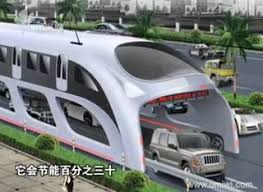Traffic Tunnel
 Traffic tunnels include tunnel works for traffic and transport in the areas of railway, highway, and rail transit. With many mountains and nearly one fifth of the global population, China possesses numerous large cities and megapolises with rapidly growing economies and huge traffic demands. As a result, a great deal of railway, highway, and rail transit facilities are required in this country. In the past, the construction of these facilities mainly involved subgrade and bridge works; in recent years, given higher environmental requirements, implementation of the large-scale development of the western region, and worsening aboveground traffic jams in large cities, tunnel works are increasingly favored. Since the beginning of the 21st century, tunnel works in China have sharply increased. Incomplete statistics show that by 2016, a total of 30 000 km of traffic tunnels in China had been completed, and over 40 000 km of traffic tunnels were under construction or being planned . China has become a true tunnel superpower.By the end of 2016, the total length of railway tunnels in service in China exceeded 14 120 km, the length of railway tunnels under construction was about 9300 km, and the length of railway tunnels under design and planning was about 10 400 km . By 2020, the total number of tunnels in service in China is expected to reach 17 000, with a total length of more than 20 000 km ; by 2030, the total length will exceed 30 000 km.
Traffic tunnels include tunnel works for traffic and transport in the areas of railway, highway, and rail transit. With many mountains and nearly one fifth of the global population, China possesses numerous large cities and megapolises with rapidly growing economies and huge traffic demands. As a result, a great deal of railway, highway, and rail transit facilities are required in this country. In the past, the construction of these facilities mainly involved subgrade and bridge works; in recent years, given higher environmental requirements, implementation of the large-scale development of the western region, and worsening aboveground traffic jams in large cities, tunnel works are increasingly favored. Since the beginning of the 21st century, tunnel works in China have sharply increased. Incomplete statistics show that by 2016, a total of 30 000 km of traffic tunnels in China had been completed, and over 40 000 km of traffic tunnels were under construction or being planned . China has become a true tunnel superpower.By the end of 2016, the total length of railway tunnels in service in China exceeded 14 120 km, the length of railway tunnels under construction was about 9300 km, and the length of railway tunnels under design and planning was about 10 400 km . By 2020, the total number of tunnels in service in China is expected to reach 17 000, with a total length of more than 20 000 km ; by 2030, the total length will exceed 30 000 km.
 By the end of 2016, the total number of railway tunnels under construction was about 2400, adding up to a total length of about 9300 km. These include 742 medium-long tunnels (with lengths of 3–10 km), with a total length of about 4034 km, and 175 extra-long tunnels (each longer than 10 km), with a total length of about 2389 km. Of the latter, six tunnels are over 20 km long, with a total length of 150.5 km . About 1600 high-speed and inter-city railway tunnels are under construction, with a total length of about 3450 km ; these make up about 40% of the total length of railway tunnels under construction. The longest railway tunnel under construction is the Gaoligong Mountain Tunnel between Dali and Ruili, which is 34.5 km long.
By the end of 2016, a total of 133 urban rail transit lines had been opened in 30 cities in the mainland of China, with a total length of 4153 km; this included 2564 km of subway tunnels, which account for 61.7% of the total length of rail transit lines in China.
By the end of 2016, the total number of railway tunnels under construction was about 2400, adding up to a total length of about 9300 km. These include 742 medium-long tunnels (with lengths of 3–10 km), with a total length of about 4034 km, and 175 extra-long tunnels (each longer than 10 km), with a total length of about 2389 km. Of the latter, six tunnels are over 20 km long, with a total length of 150.5 km . About 1600 high-speed and inter-city railway tunnels are under construction, with a total length of about 3450 km ; these make up about 40% of the total length of railway tunnels under construction. The longest railway tunnel under construction is the Gaoligong Mountain Tunnel between Dali and Ruili, which is 34.5 km long.
By the end of 2016, a total of 133 urban rail transit lines had been opened in 30 cities in the mainland of China, with a total length of 4153 km; this included 2564 km of subway tunnels, which account for 61.7% of the total length of rail transit lines in China.
Since the beginning of the 21st century, China has entered a peak period of traffic tunnel construction. Despite the brilliant achievements that have already been accomplished, many challenges remain. With the development of transport facilities in Western China, more tunnels will be built in general, tunnels of over 10 km in length will become the new normal , and more tunnels will be built to cross rivers or seas. China’s tunnel engineers will encounter more complex geological conditions and environmental challenges. Relentless innovation in new technologies, materials, and equipment will provide broader prospects for technical progress in China’s traffic tunnels.